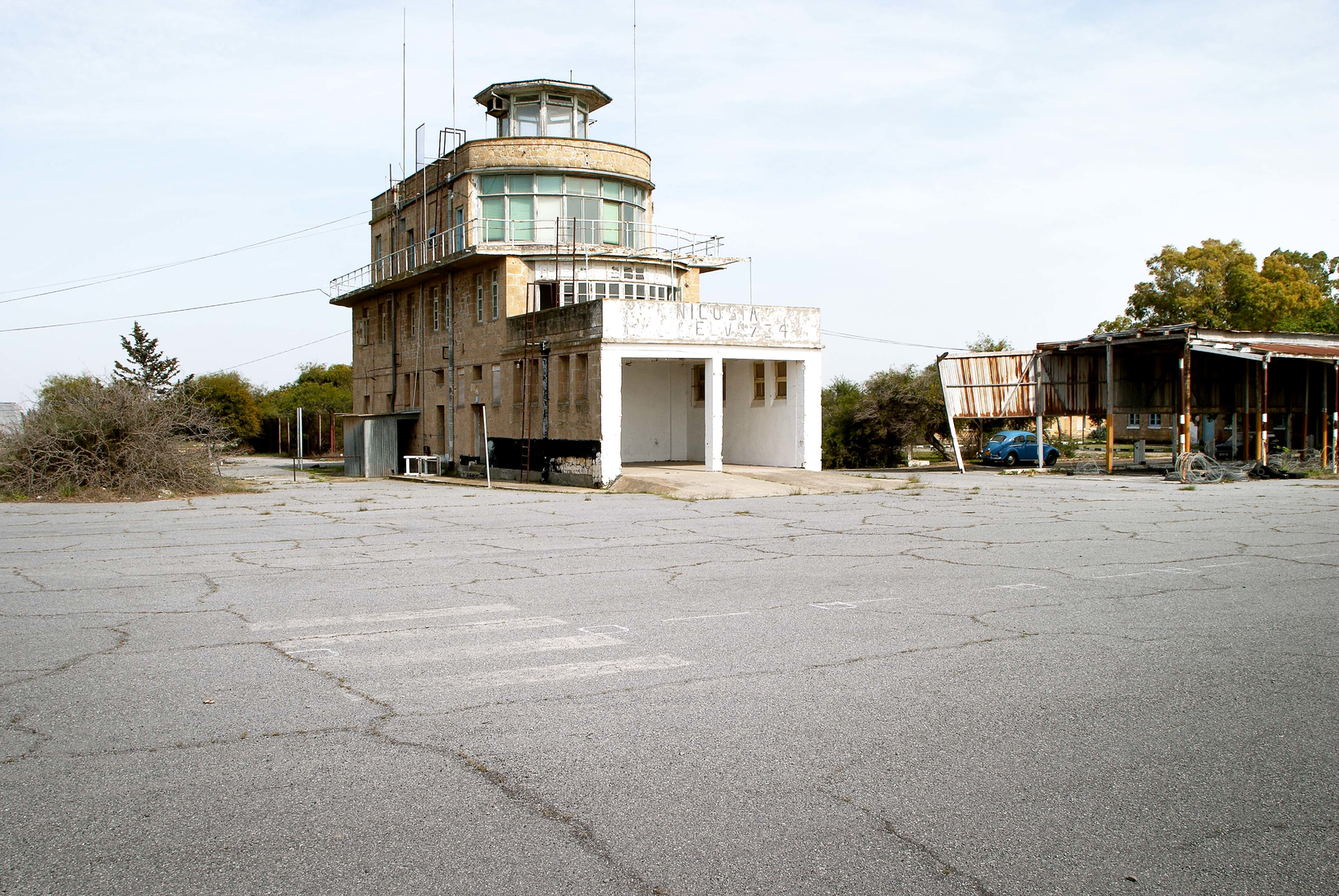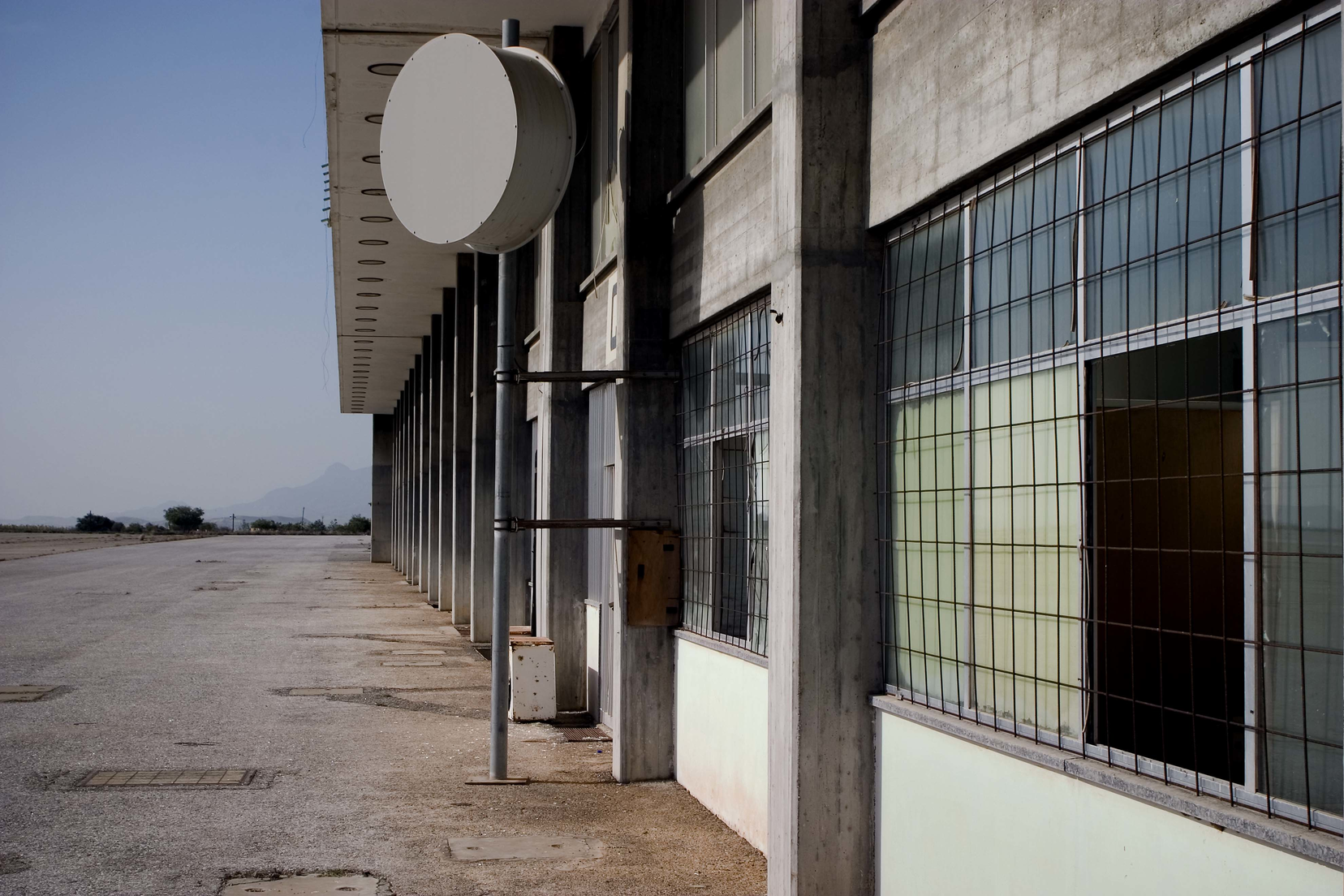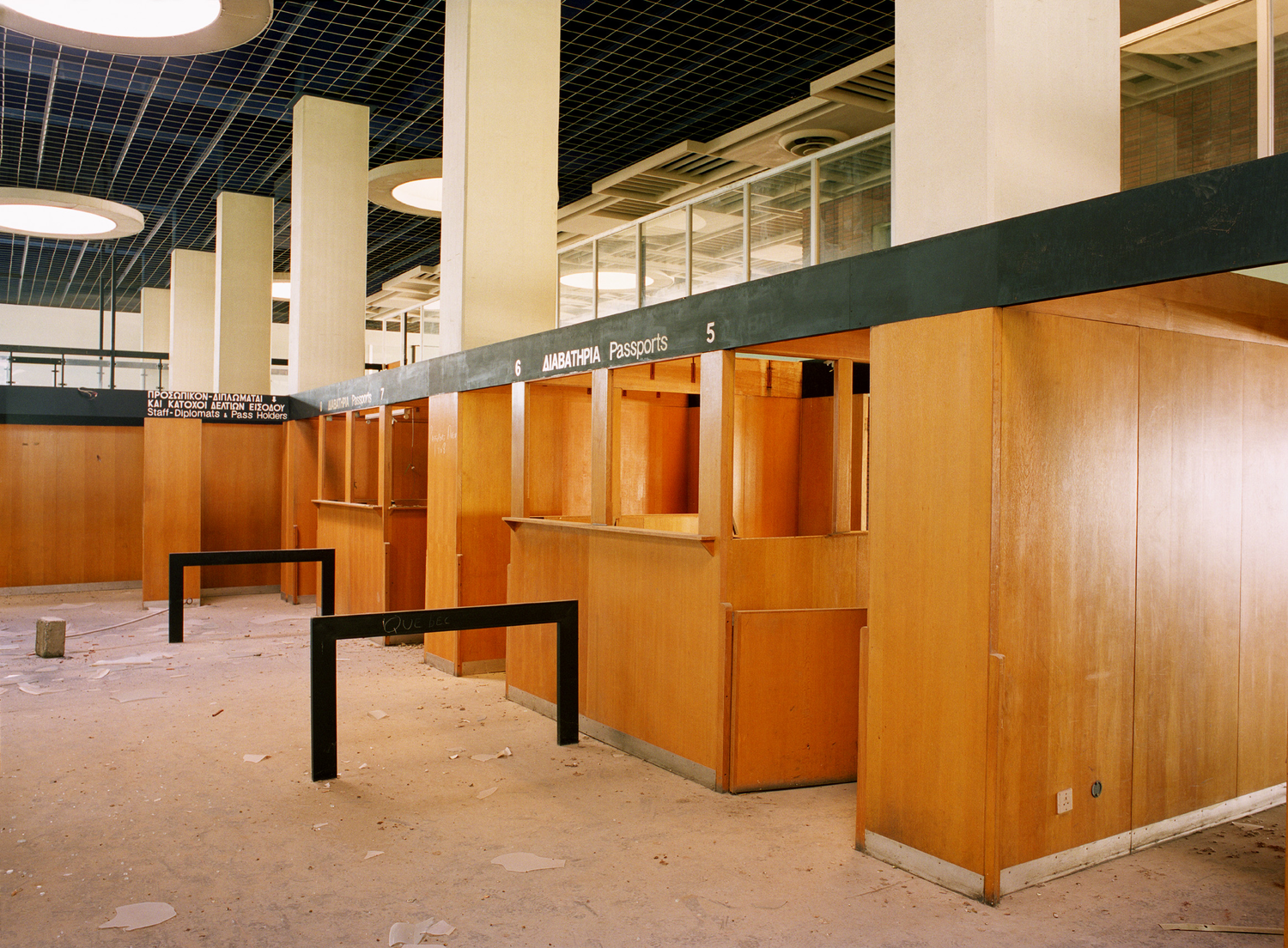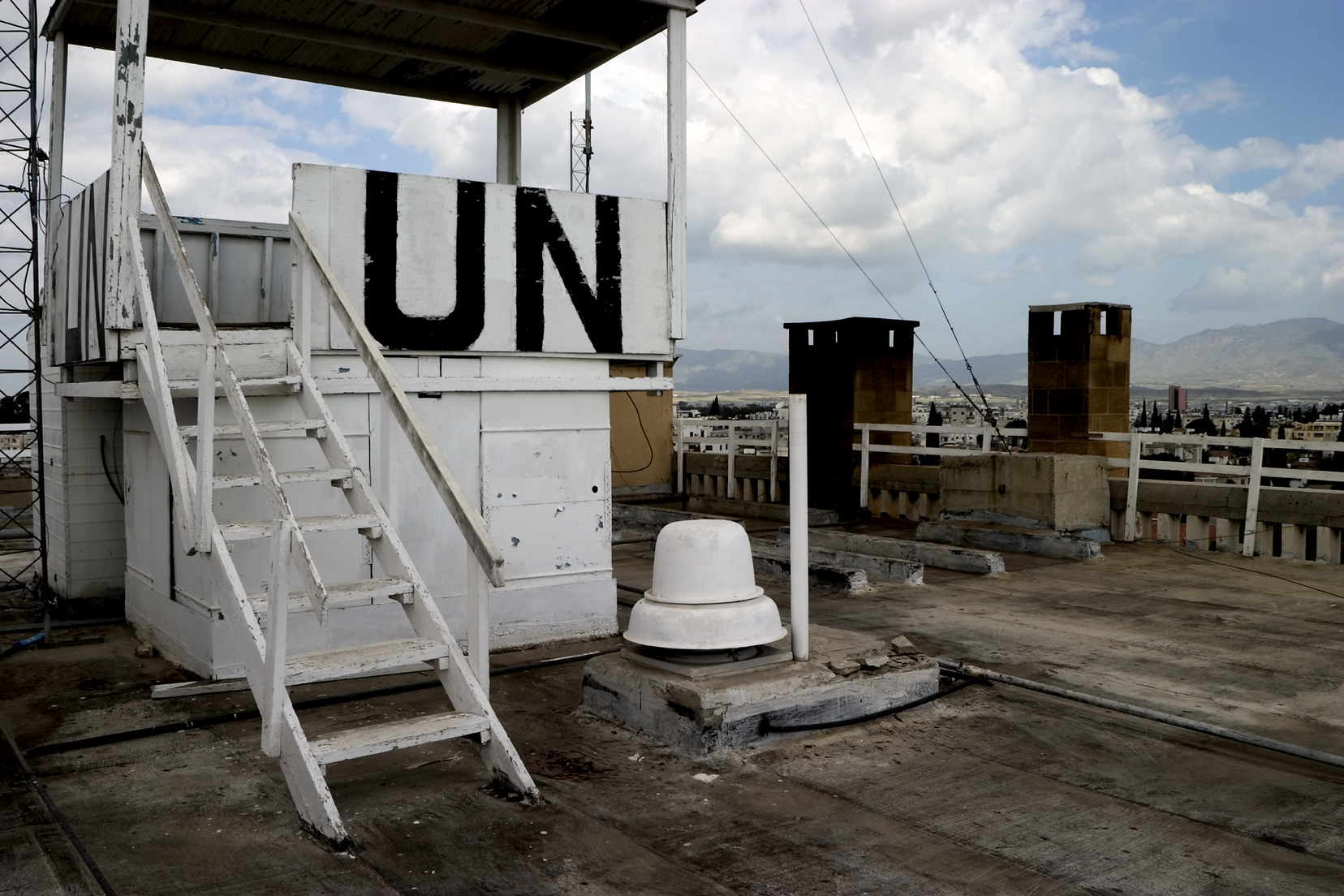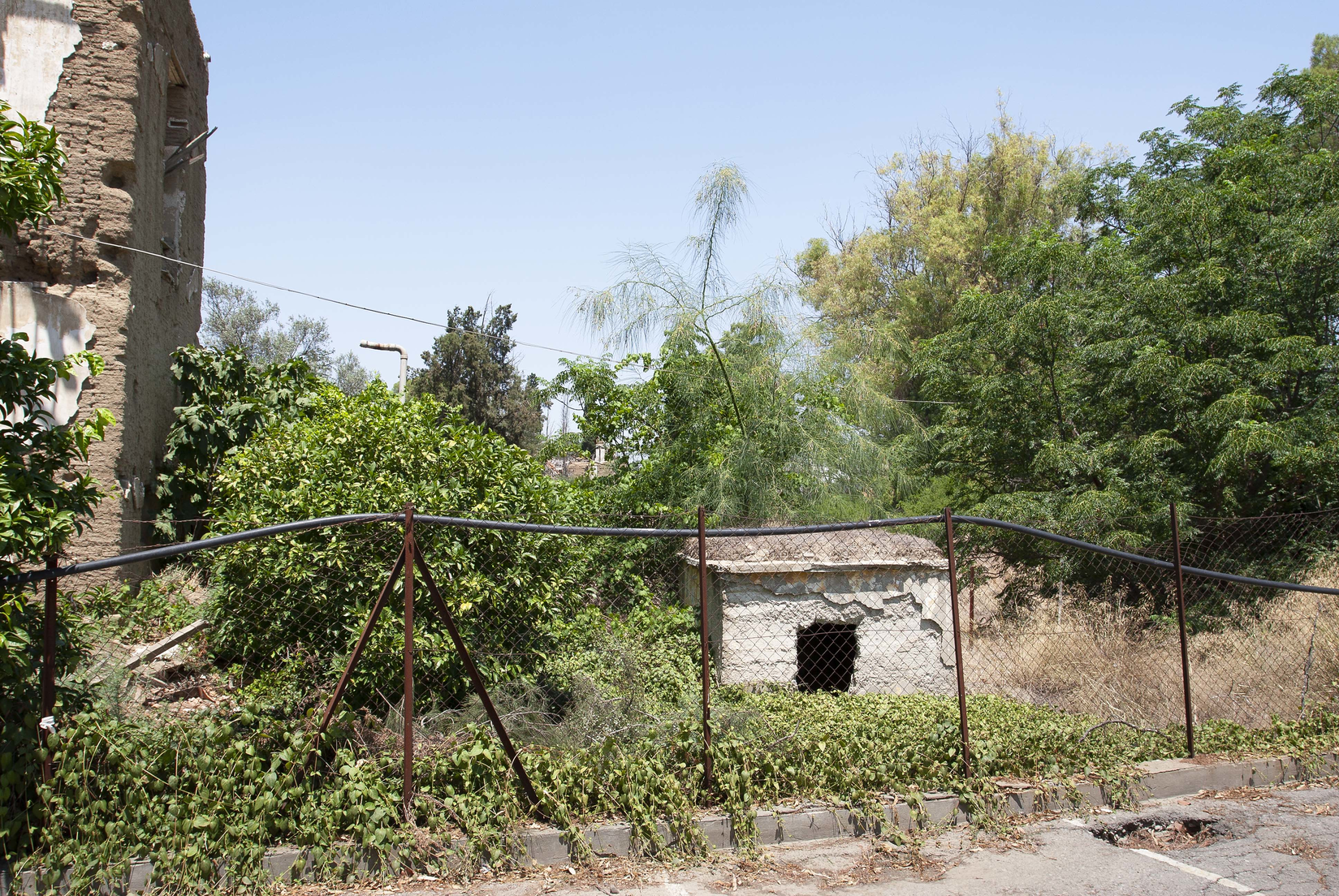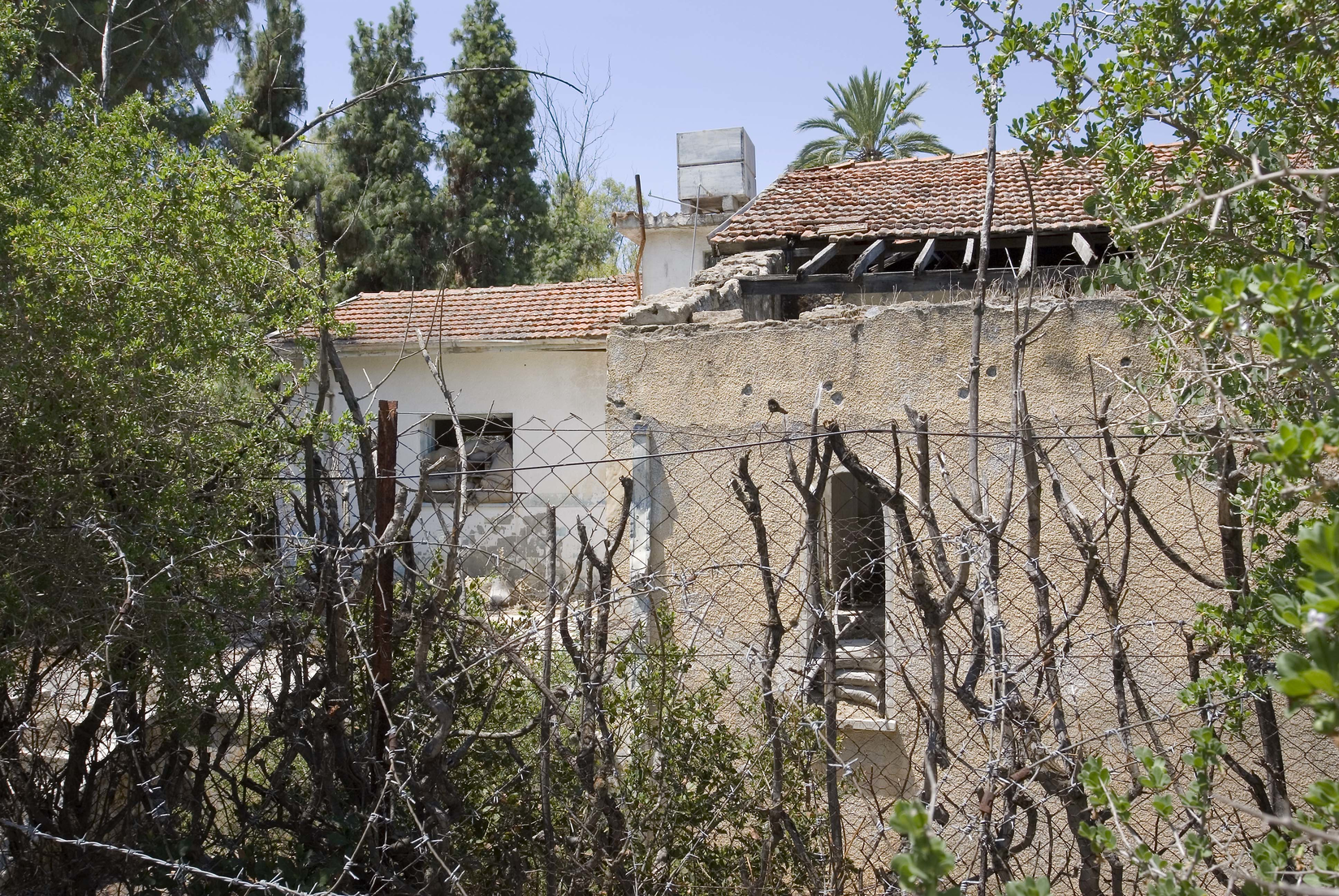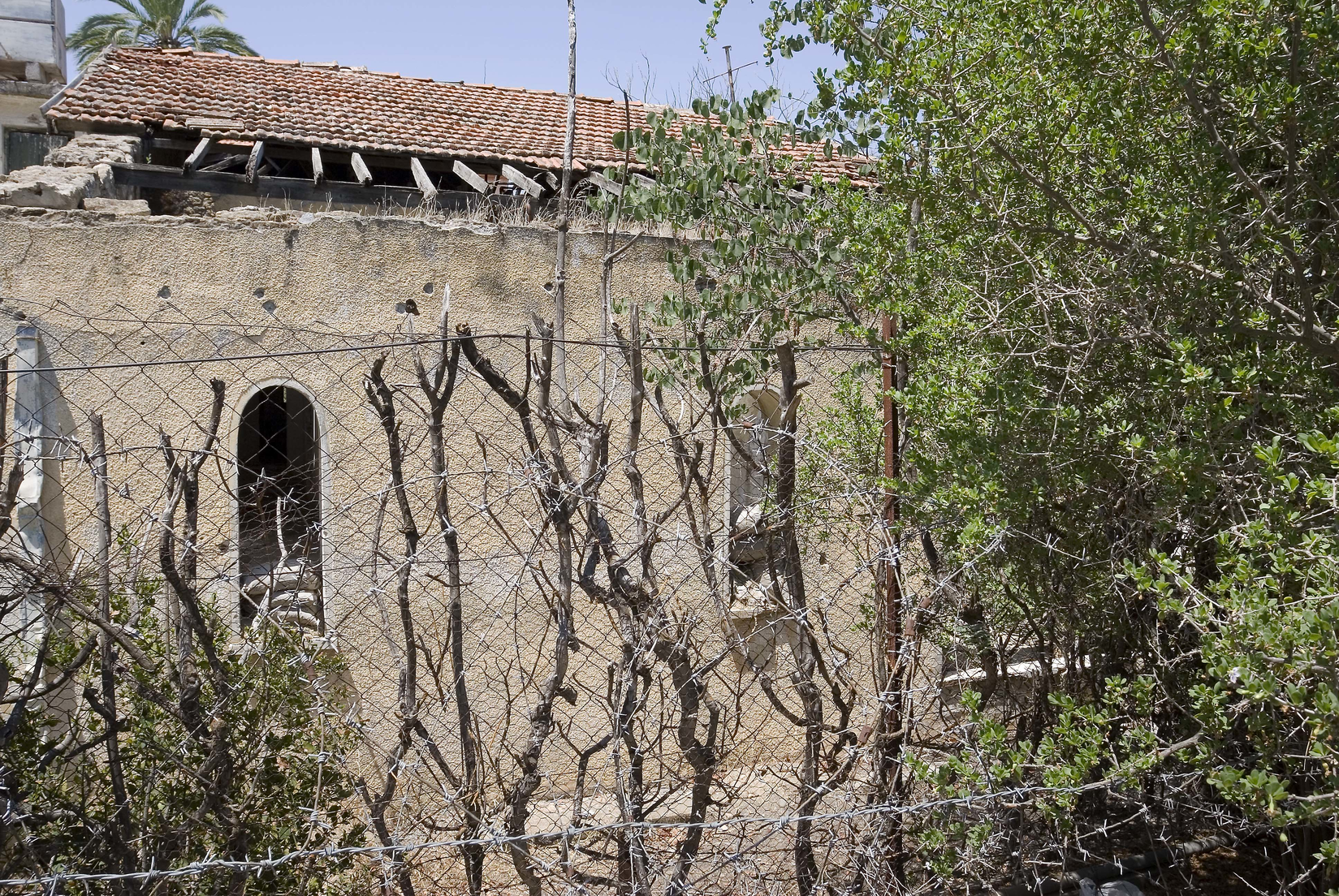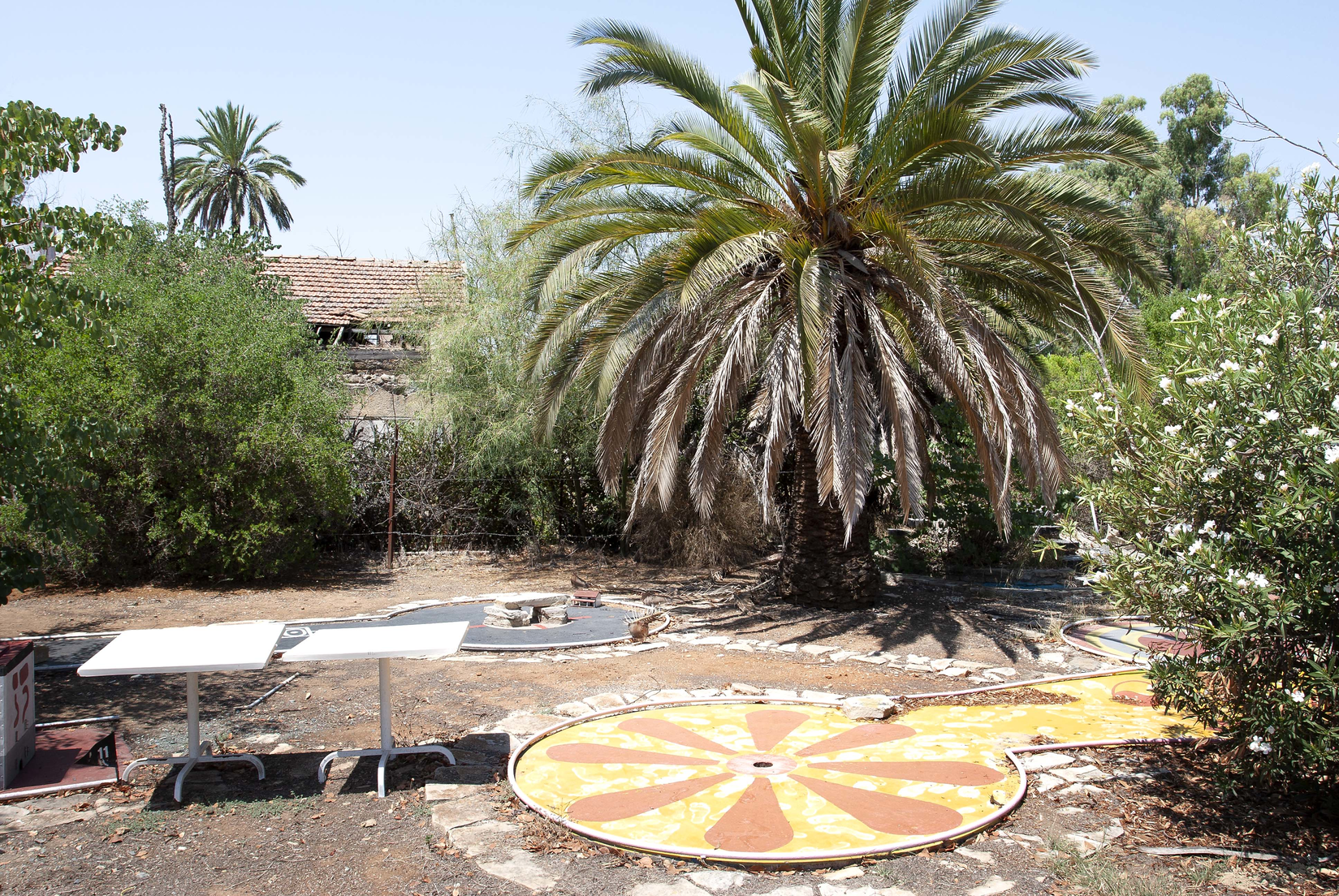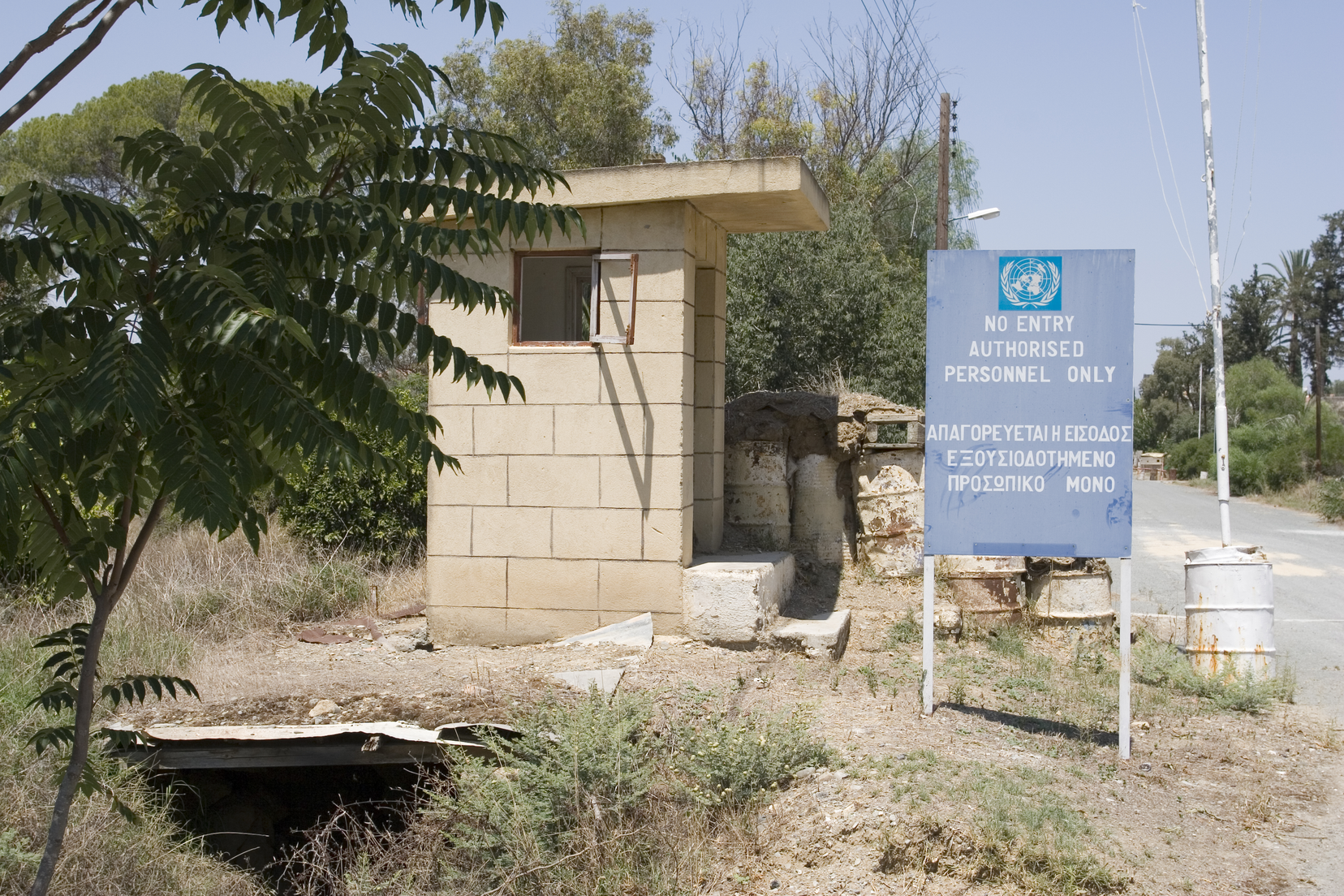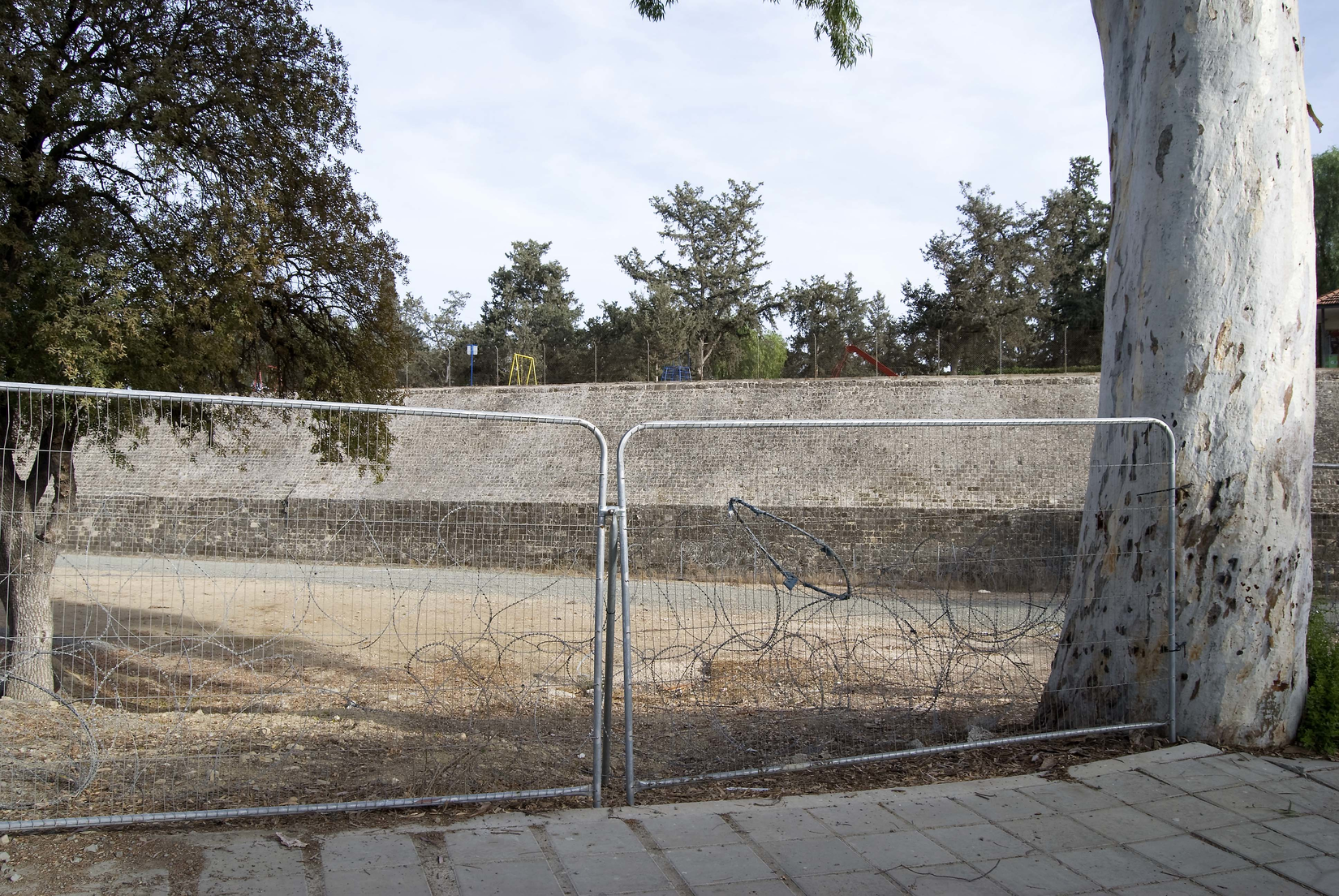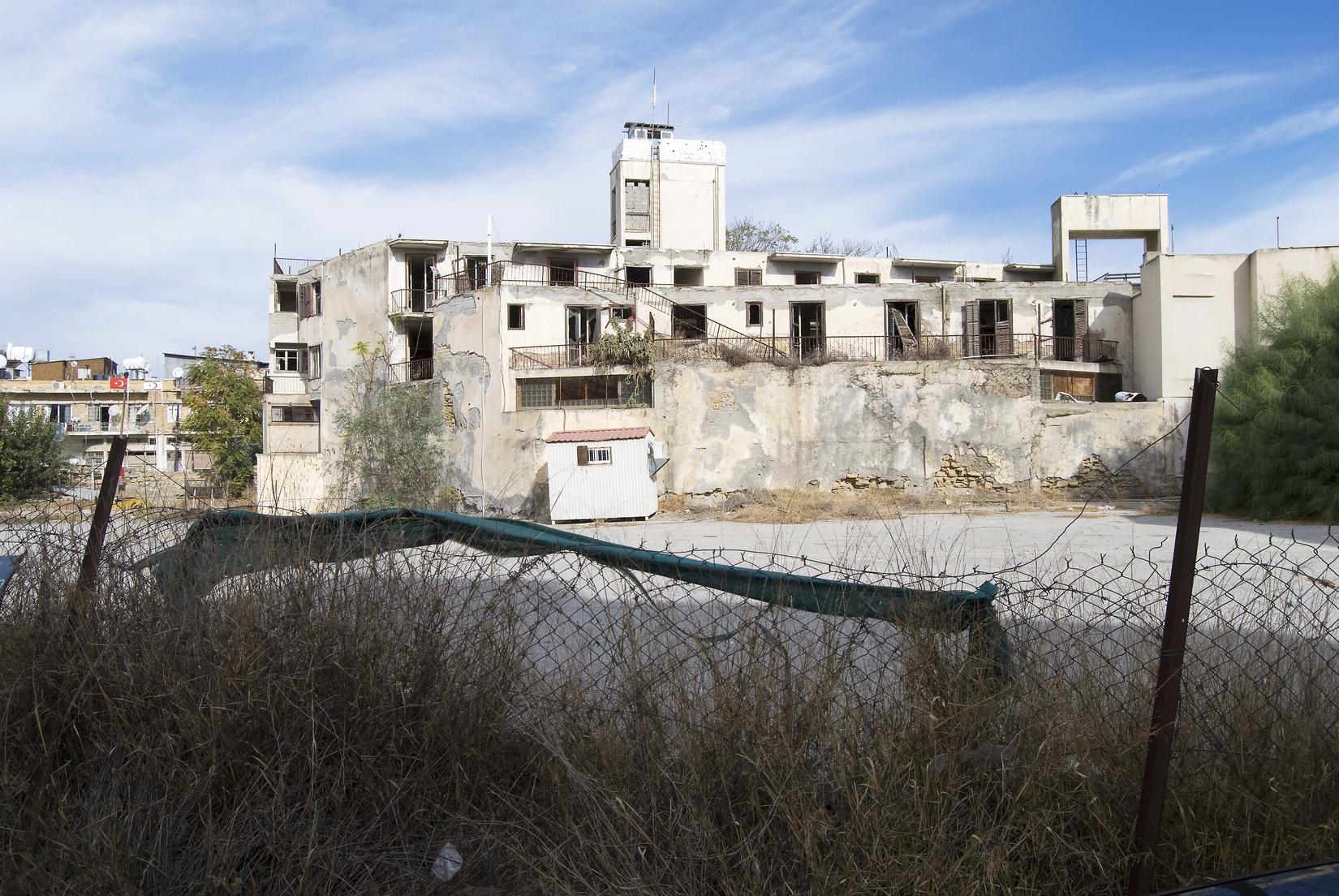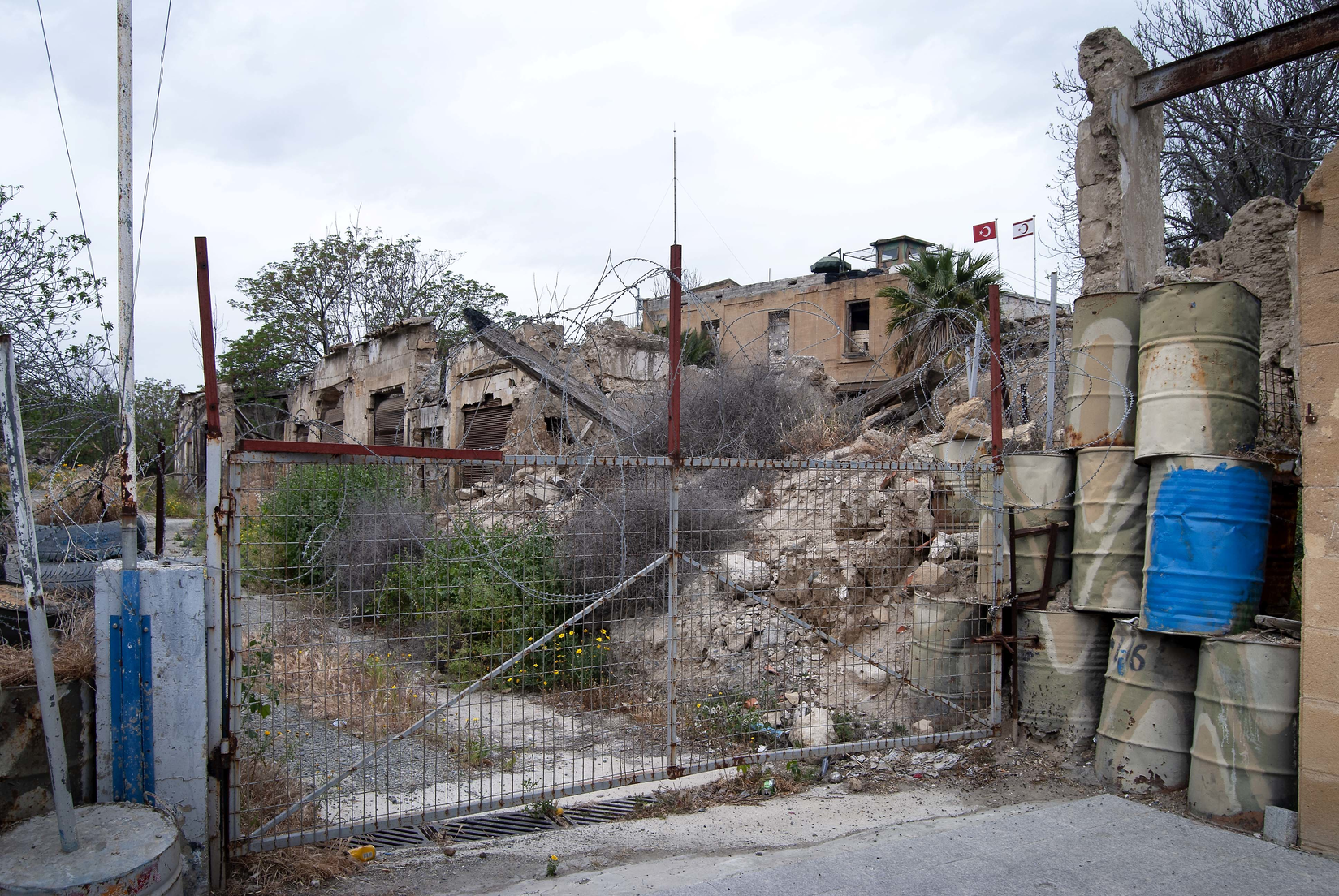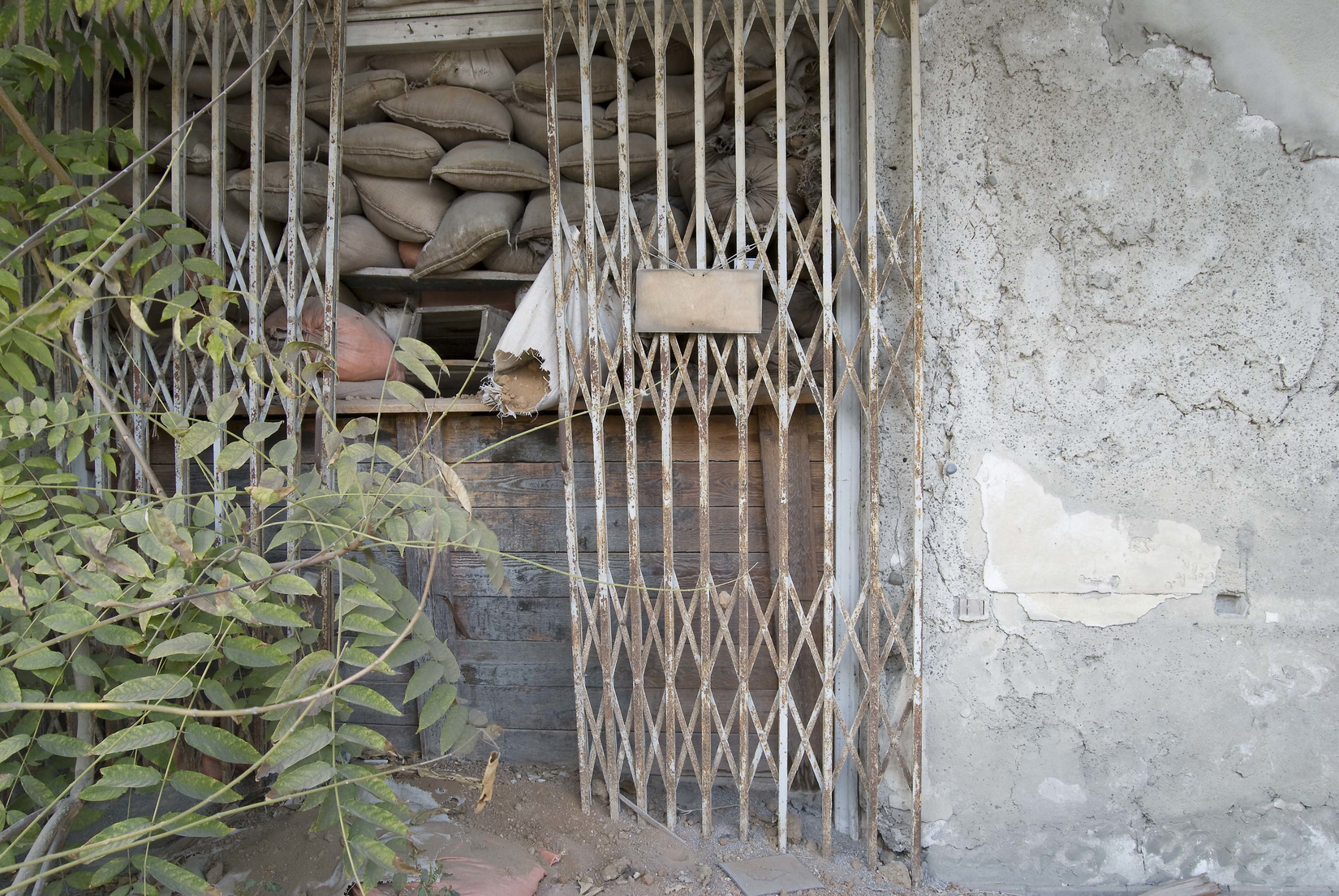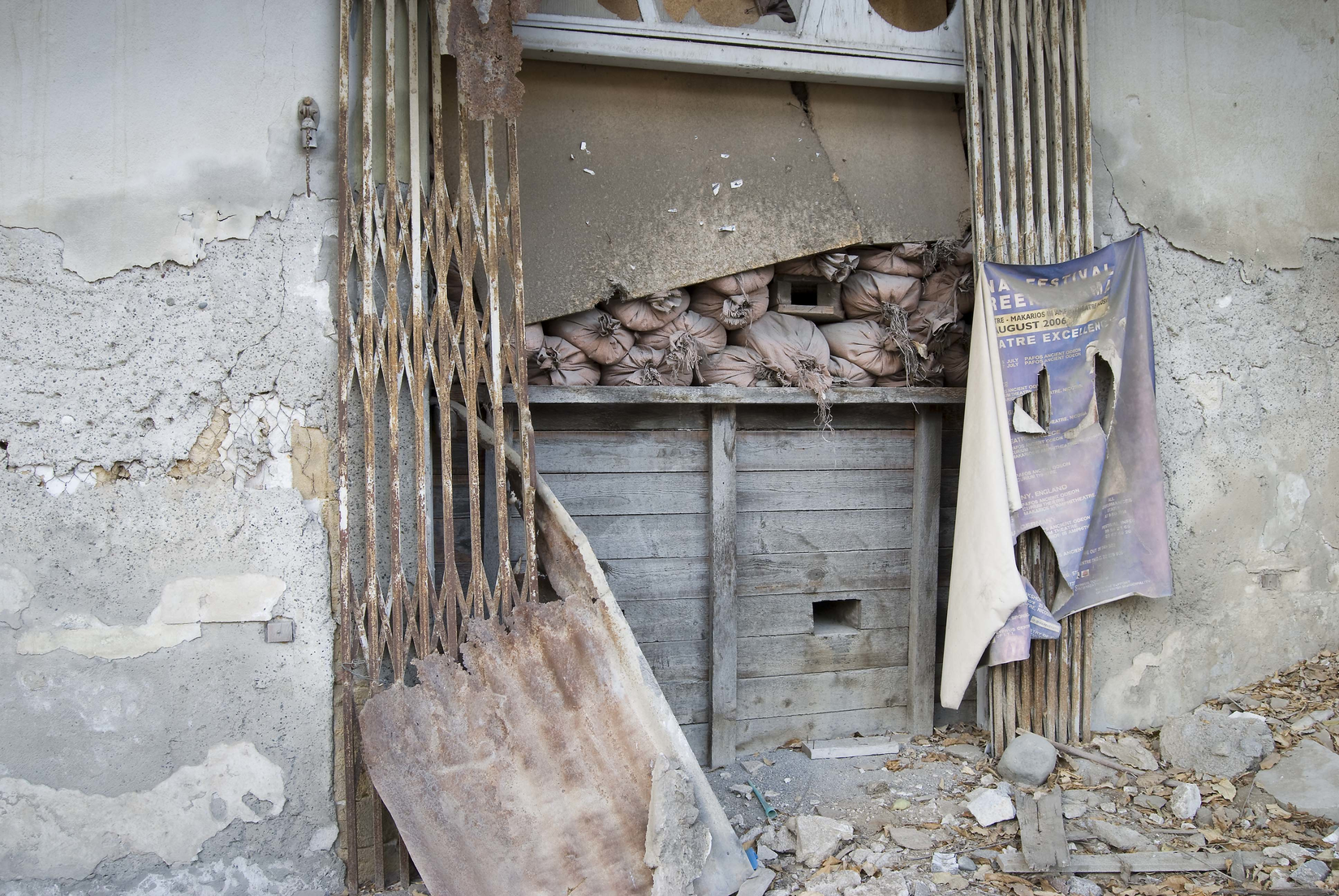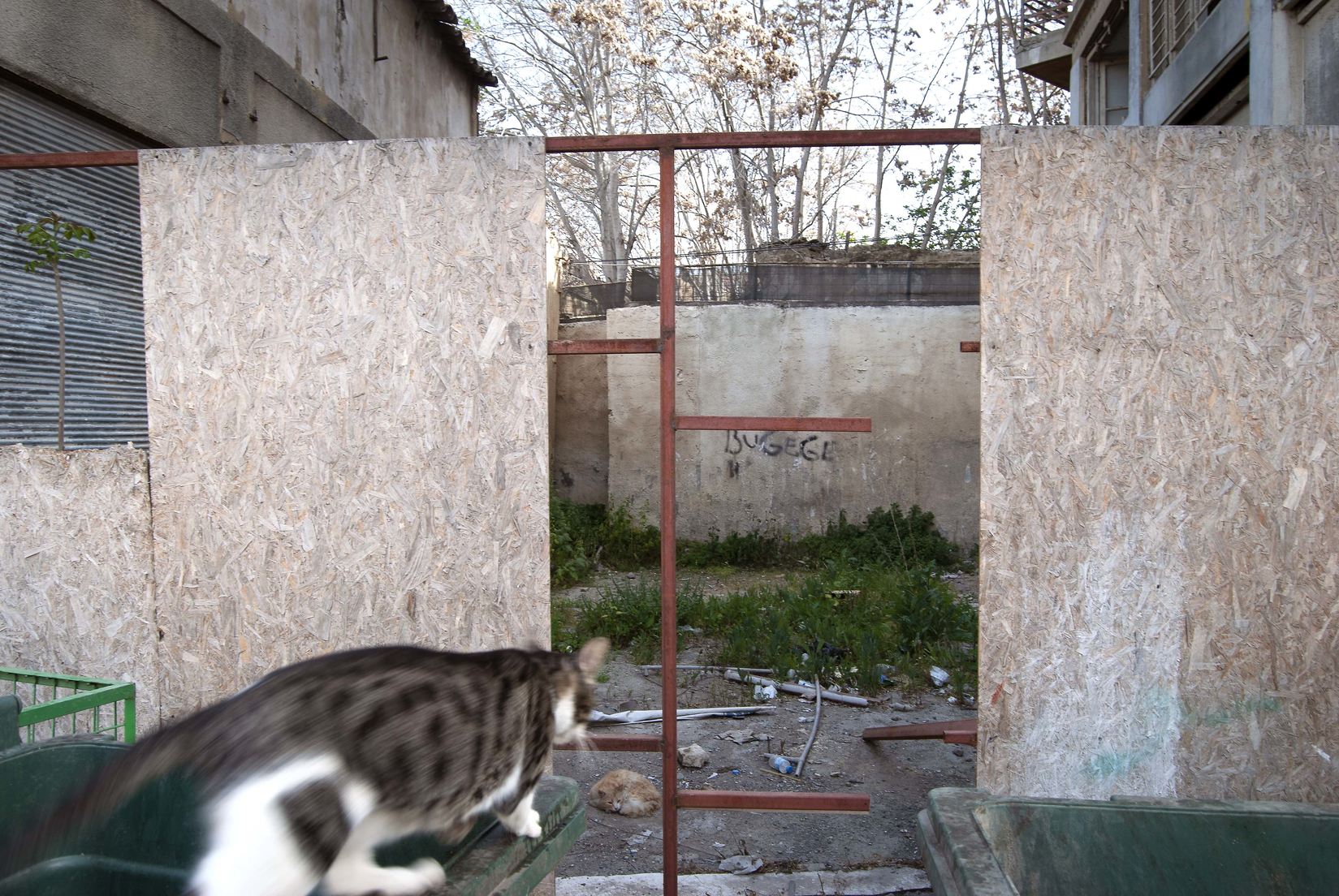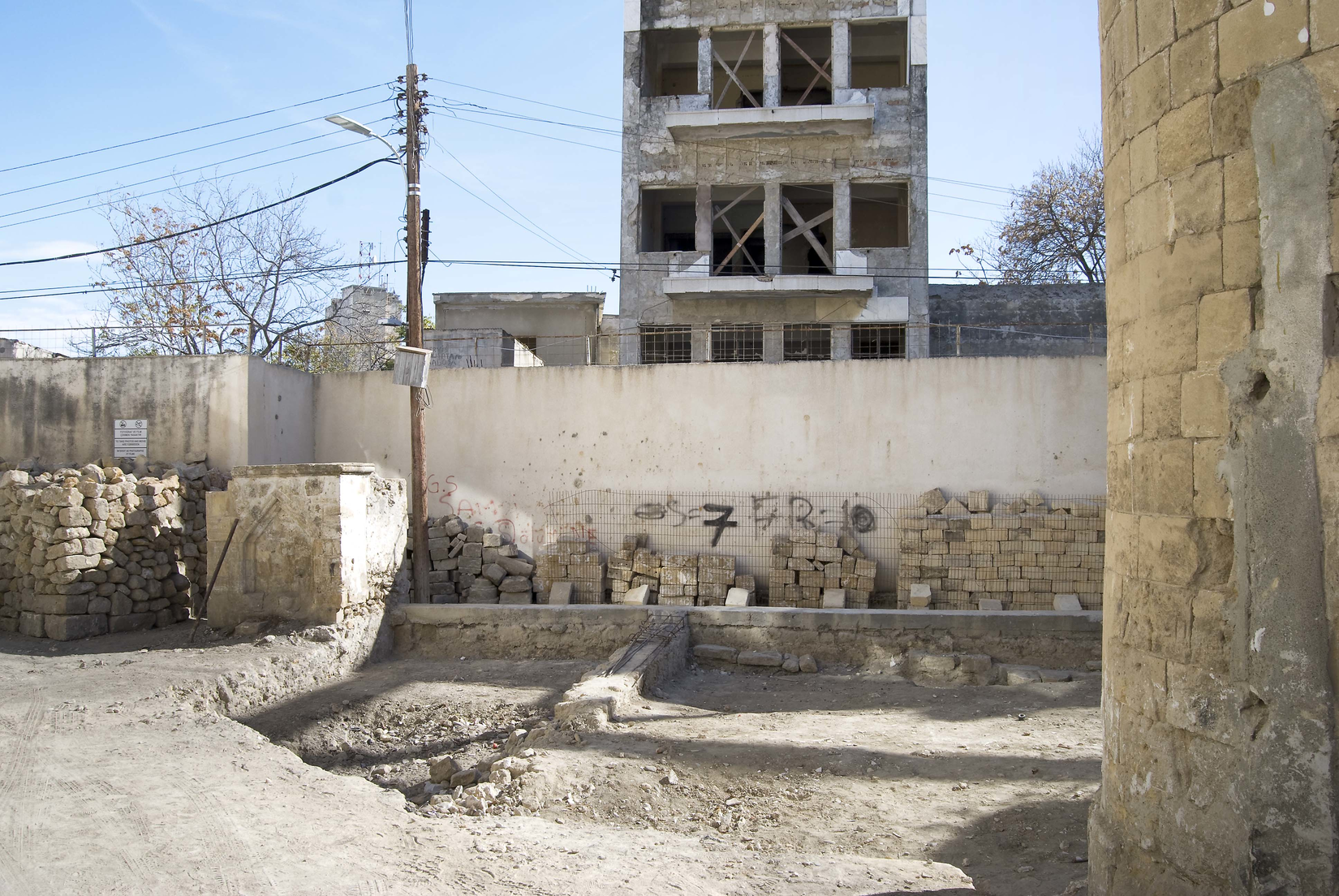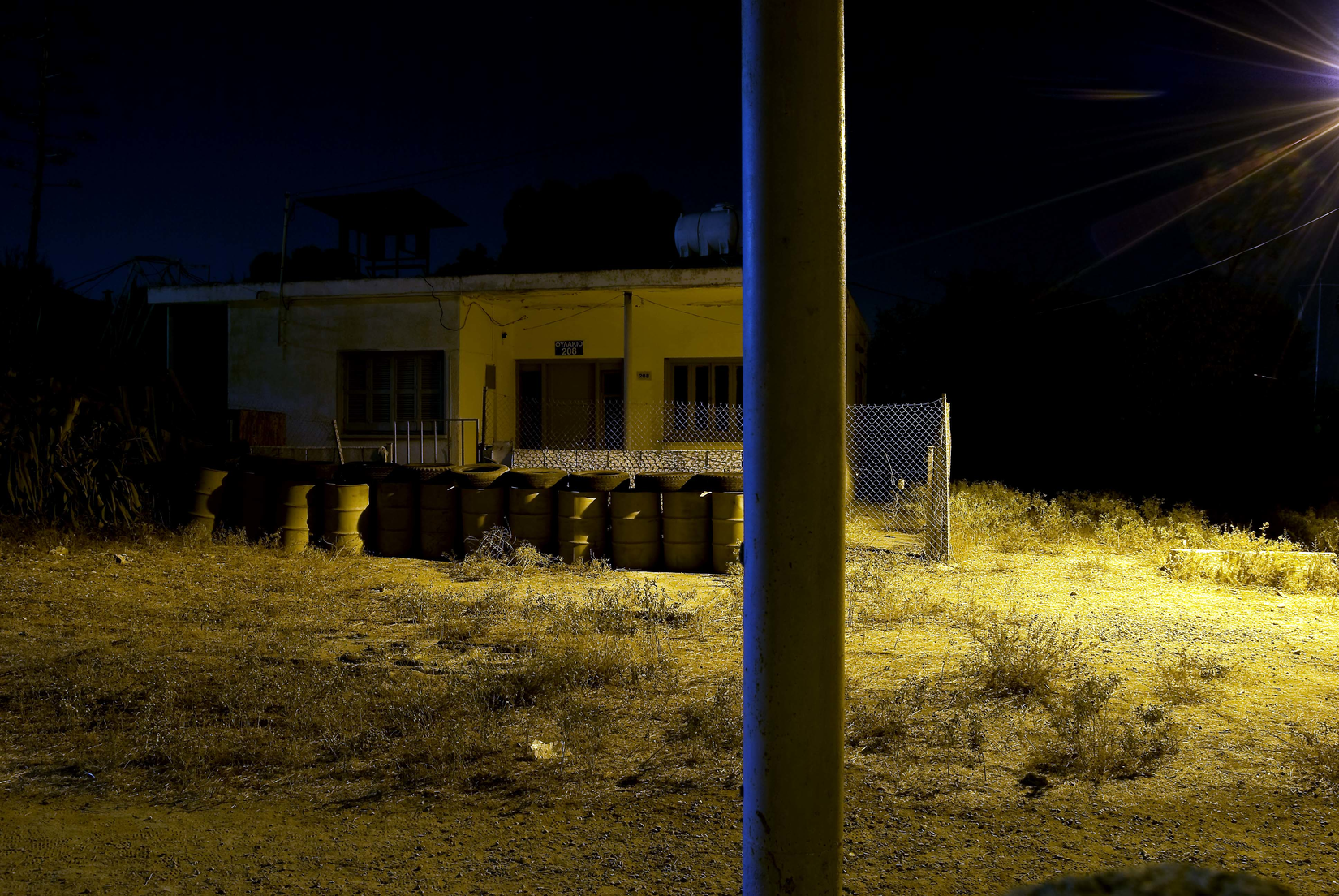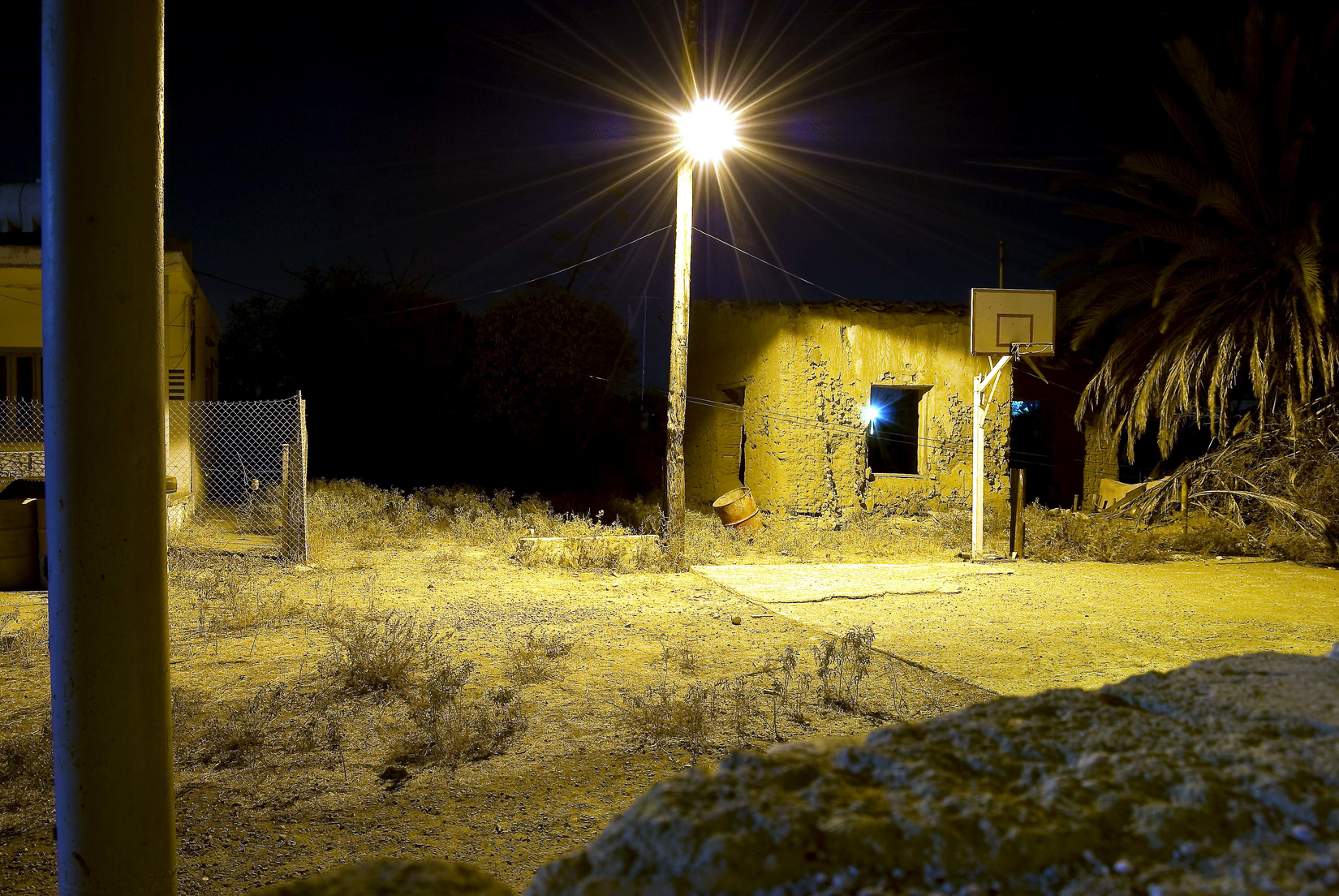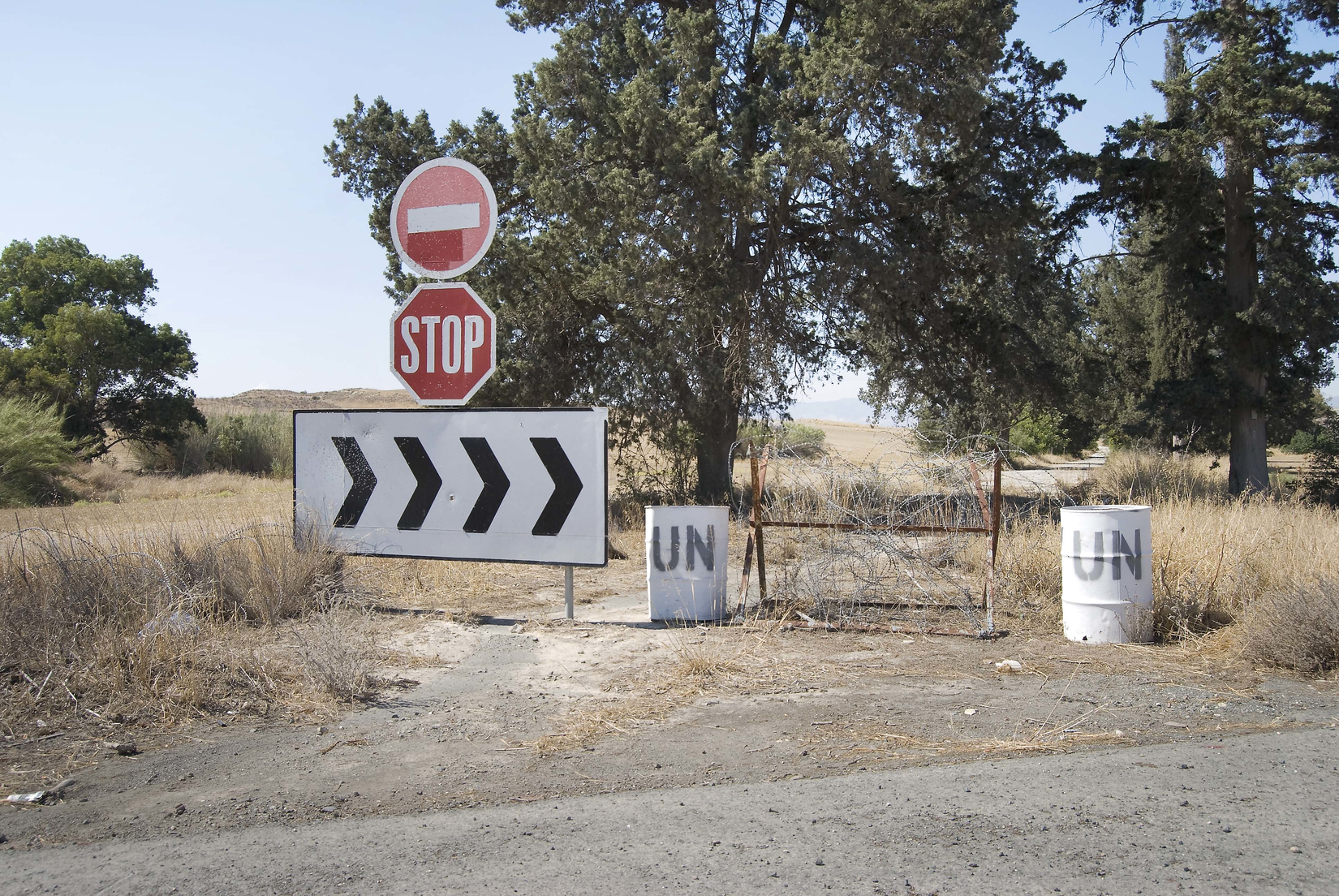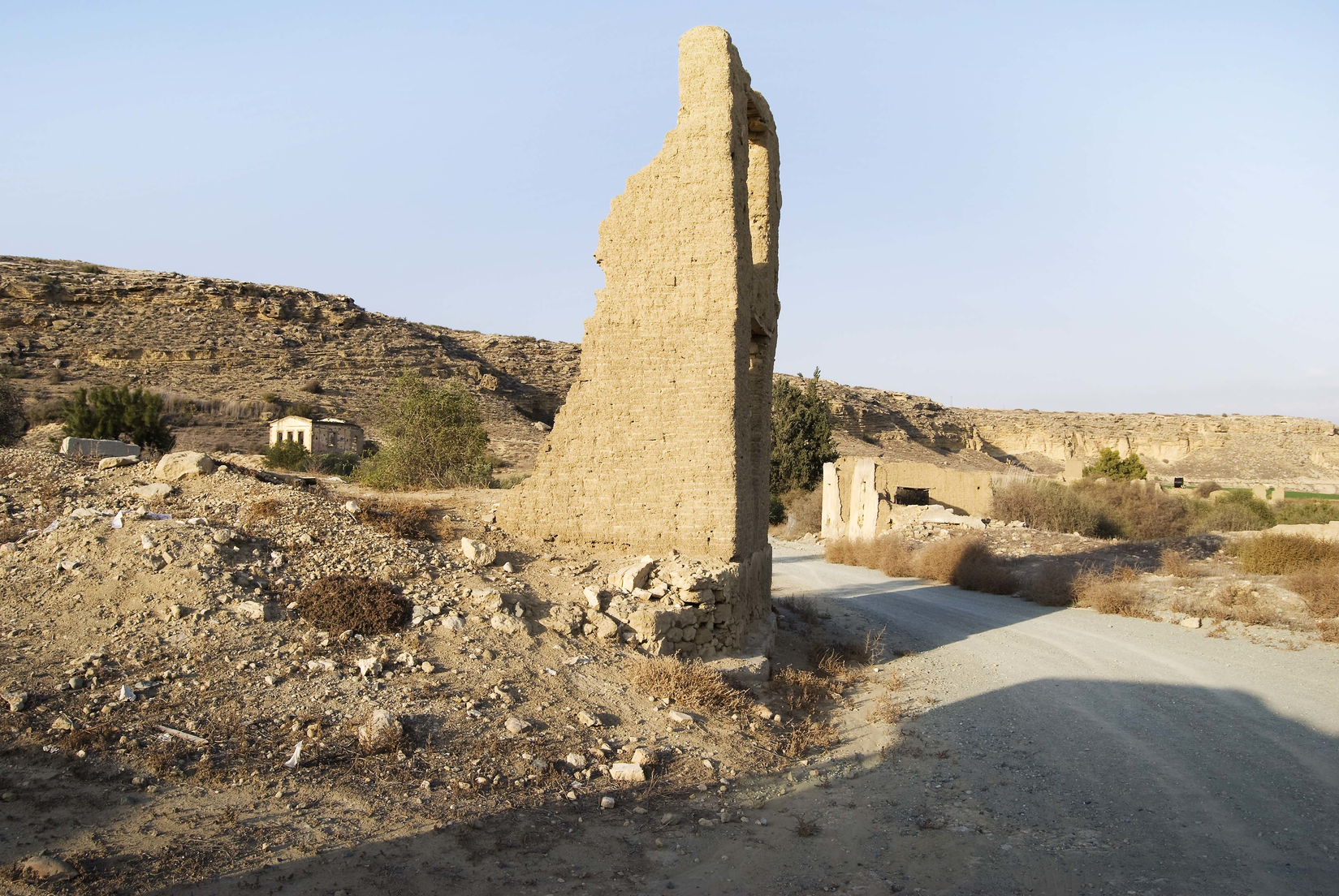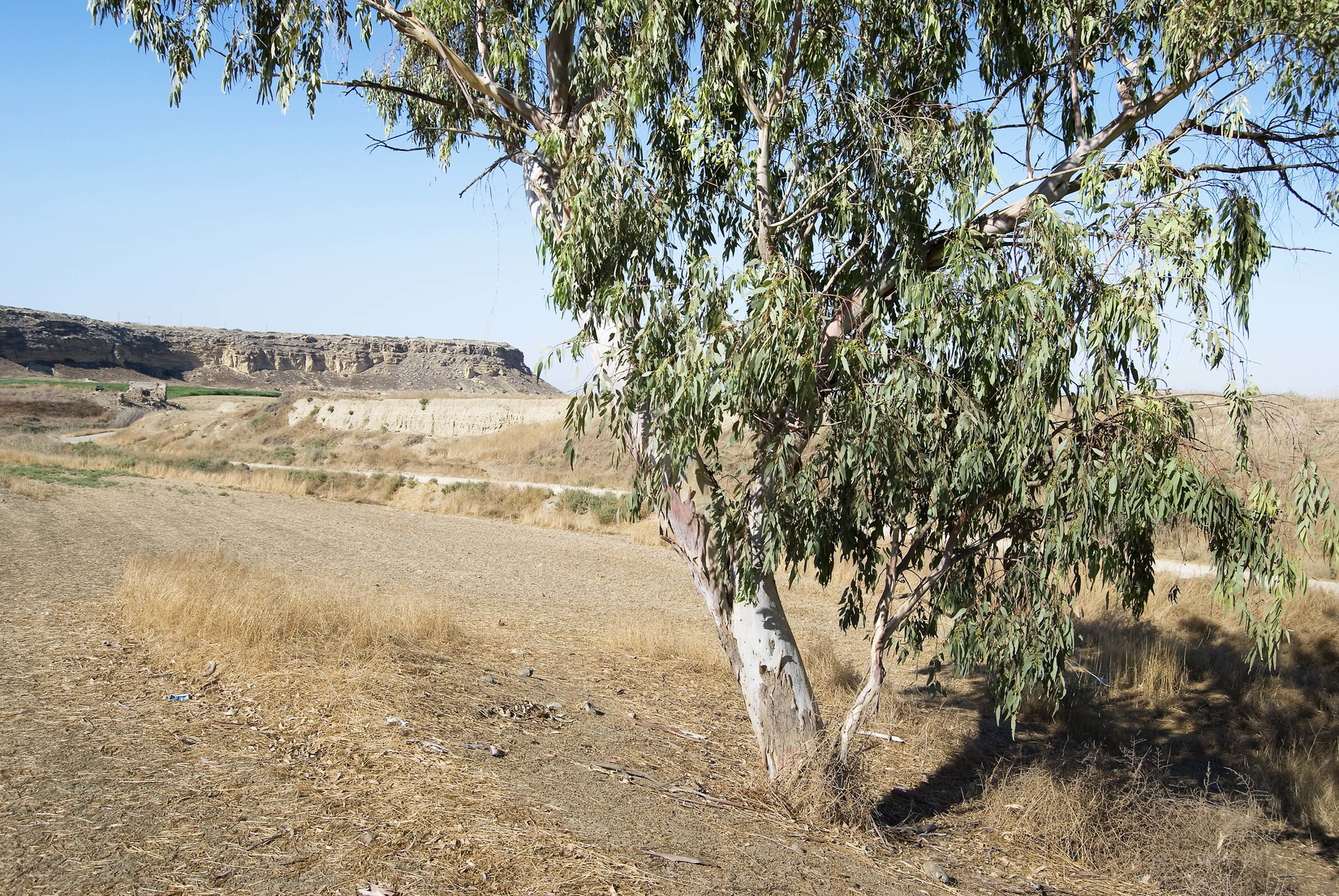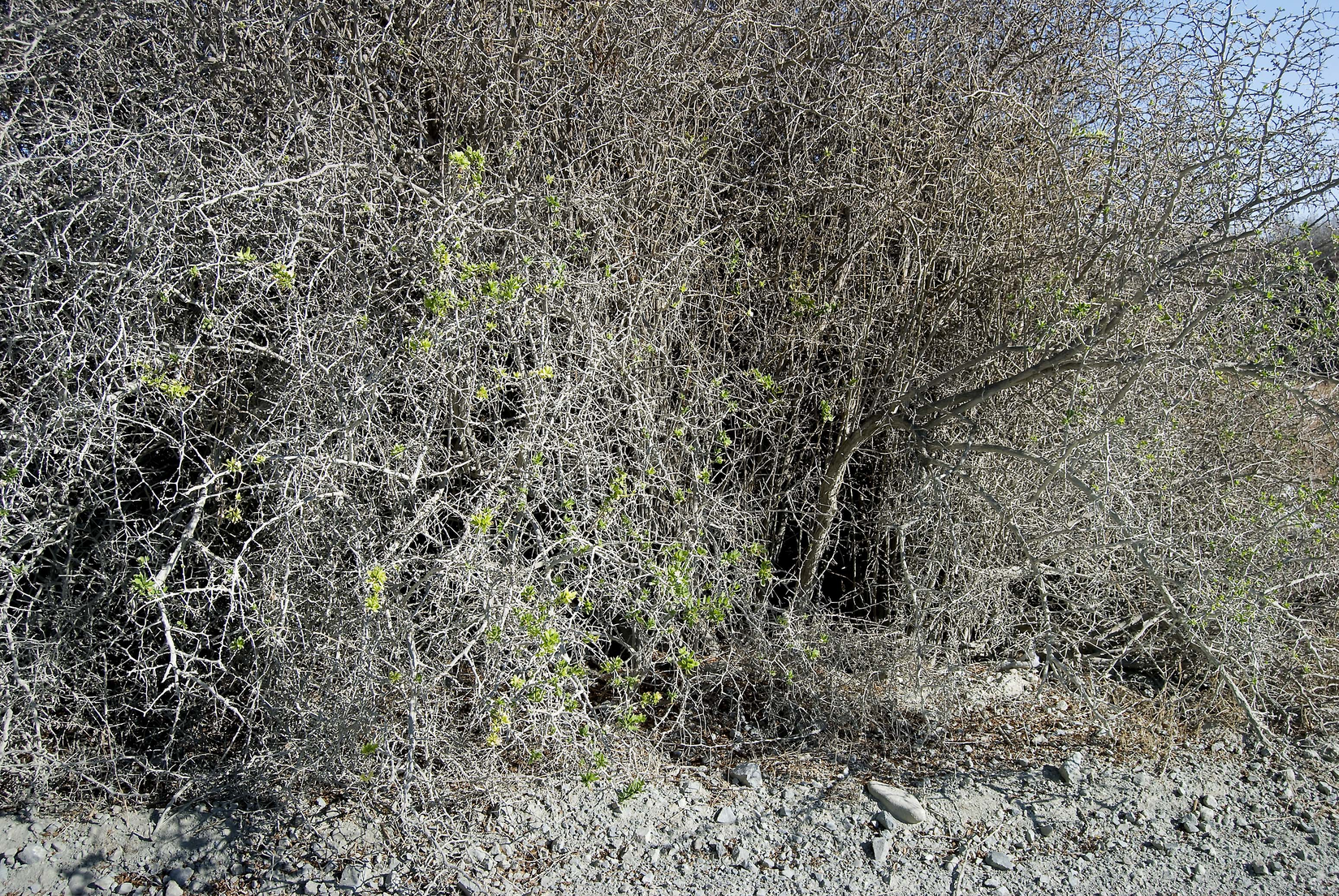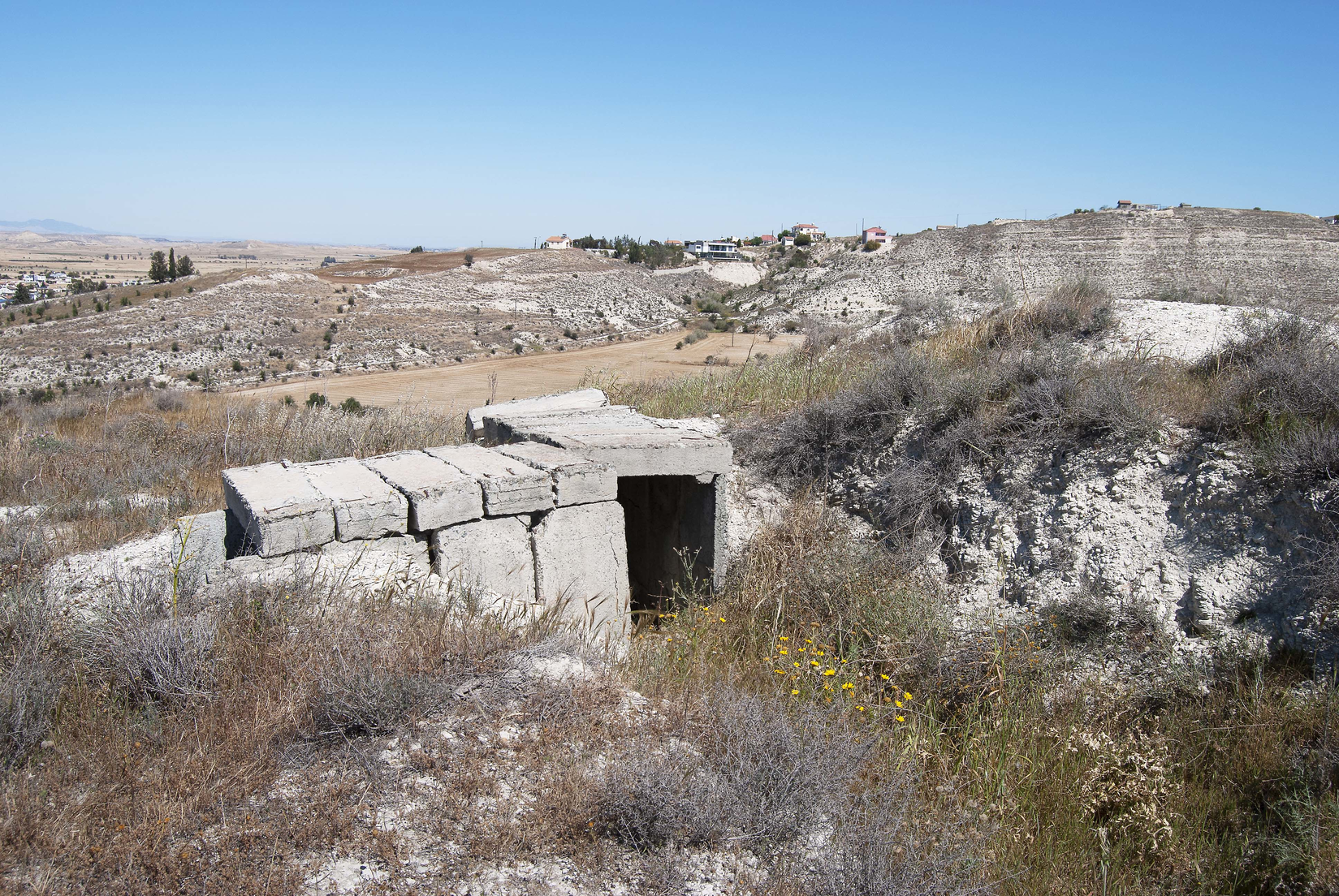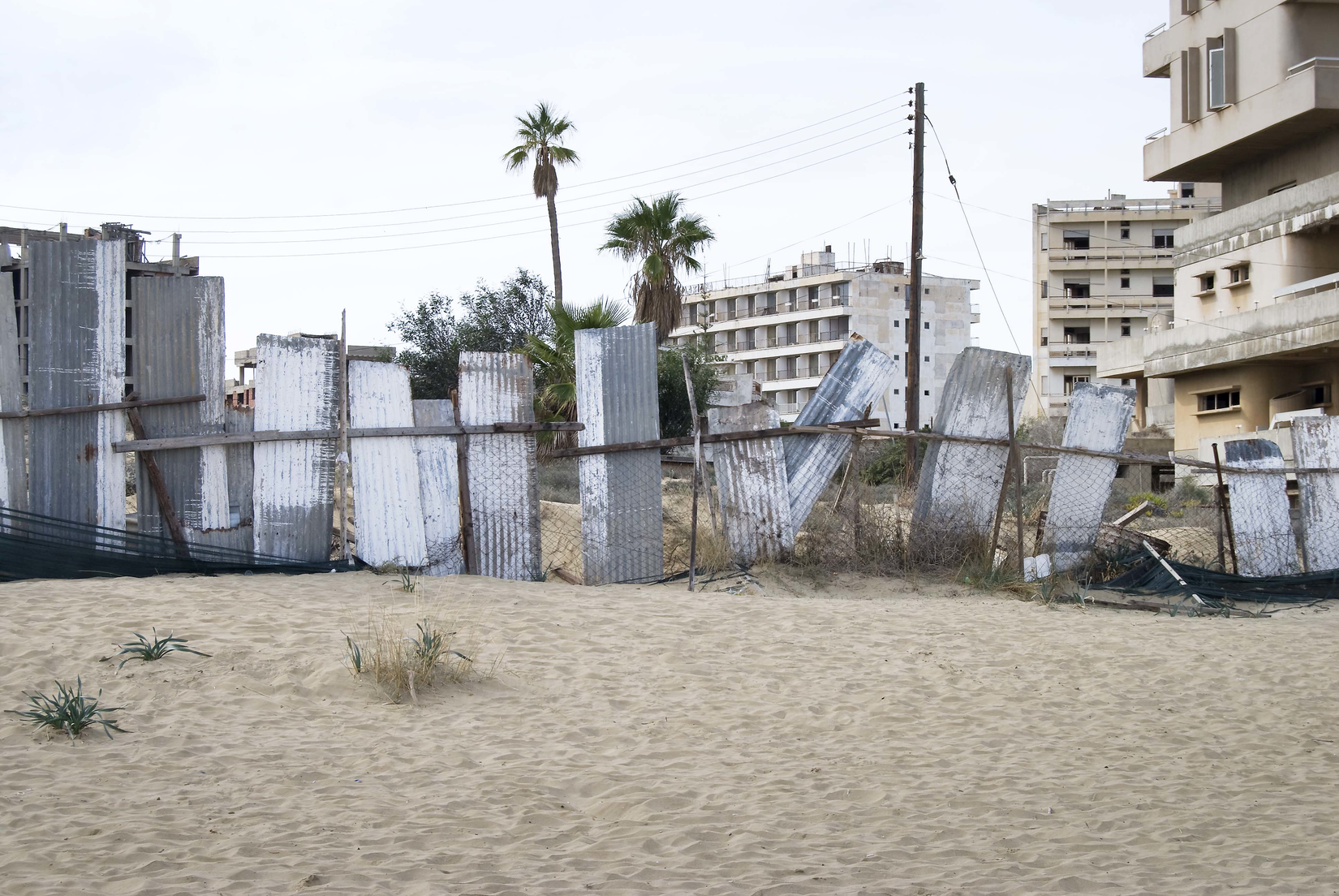'... moving through emptied areas and fractured lands'
Photography as practice-led research
The series of photographs by Jim Harold seen in this exposition result from fieldwork undertaken between 1998–2005, with permission from the UN, in Cyprus’ de-militarised Buffer Zone.[1] The series has subsequently been expanded through further fieldwork since 2016.
The photographs address memory and the landscape of conflict and seek to engage with the dilemma of aesthetics and politics. The images intentionally resist literal and figurative interpretations and deliberately frame every element within their content as having no more or less significance. So, within the now re-wilded landscape, everything seems ‘natural’ or matter of fact, including bullet-pocked walls, wire fences marking a mine field, territorial flags, and domestic remnants. By paring back the emotional rhetoric of each photograph – presenting an unembellished image – each depiction presents a kind of document that acknowledges the detached and ruptured world captured within the Buffer Zone: neither a theatrical space, nor an incontrovertible truth, but something that acknowledges both the construct of the Zone and the unknowability behind its appearance.
In a very real sense these images of Cyprus are the material trace of the act of an archaeological enquiry into the present. A present represented by successive visits to the Island and to many of the sites depicted. As such each image acknowledges that the present is very much attached to events occurring 40 years ago and earlier; whether that of the Turkish invasion or the earlier relics of Ottoman and British Colonial rule. Events are present across the surface of each image, as both an actual trace – of objects or affects – and as the consequence of former histories.
The photographs do not, however, allude solely to the past. They evidence the currency of change due to human action, neglect, time and climate. These images also document an evolving archive of things turned away from, lost or left: a random and pervasive collection of cultural detritus.[2] Each photograph is, then, not simply a post-event nostalgic object, as some theorists might suggest. Rather, it is a melancholy thing – occupying the territory between reportage and the gallery – that, through its aesthetic qualities, denies narrative closure.
The photographs, now curious relics, ally themselves to time, the nature of events, and the cut in time represented by the Buffer Zone itself. A caesura that is also a hemi-stitch between the edges and margins of each nation state. Within this space we are located in Yves Bonnefoy’s ‘present’ that is filled with a profound sense, simultaneously, of uncertainty and of becoming[3]. In these terms, this landscape cannot be reduced simply to a conventional sense of ‘place’ as a fixed entity[4] – which would imply a state of belonging or of loss (with the attendant thoughts of nostalgia). Instead, the viewer is held in a state of uncertainty where, to quote Jean-François Lyotard, they: “[…] are no longer simply its hostage but its lost traveller.”[5] Interpreted in this way, both the border and the image cease to be limits or fixed points but become permeable spaces where meaning becomes dynamically other.
[1] Photographs from this series have been exhibited and published, as follows:
1998 Desert: Between the lines, at the limits: Portfolio Gallery, Edinburgh. Comprising new work made in the Cyprus Buffer Zone and the Egyptian Desert. Funded by The Leverhulme Trust and SoFA Research Committee.
1998 Desert: Between the lines, at the limits: Portfolio Gallery, Edinburgh. Comprising new work made in the Cyprus Buffer Zone and the Egyptian Desert. Funded by The Leverhulme Trust and SoFA Research Committee.
2005 Across a Fractured Land(scape), installation using wall painting texts and photographs, Street Level Photoworks, Glasgow.
2006 Caesura - Cyprus/Kibris/Kypros,an E-publication commissioned by Proboscis, London for their series entitled Liquid Geographies. A5, 28pp. ISBN 1 901540 36 7.
2016 ‘Caesura: Cyprus – Kibris – Kypros’, in “The Drouth”, Issue 54 – Interstices, Winter/Spring 2016. ISSN 1474 6190.
2016 CCFT exhibition and Symposium, Department of Architecture, University of Nicosia.
[2] Navaro-Yashin, Yael. The Make-Believe Space: Affective Geography in a Postwar Polity, Durham & London: Duke University Press, 2012.
[3] Bonnefoy, Yves. The Arrière-pays, Stephen Romer (trans.), London: Seagull Books, 2012 (1972), 170.
[4] Lyotard, Jean-François. ‘Scapeland’, in Andrew Benjamin (ed.), The Lyotard Reader, Oxford: Blackwell, 1989, 216.
[5] Lyotard, Jean-François. ‘Scapeland’, in Andrew Benjamin (ed.), The Lyotard Reader, Oxford: Blackwell, 1989, 219.

